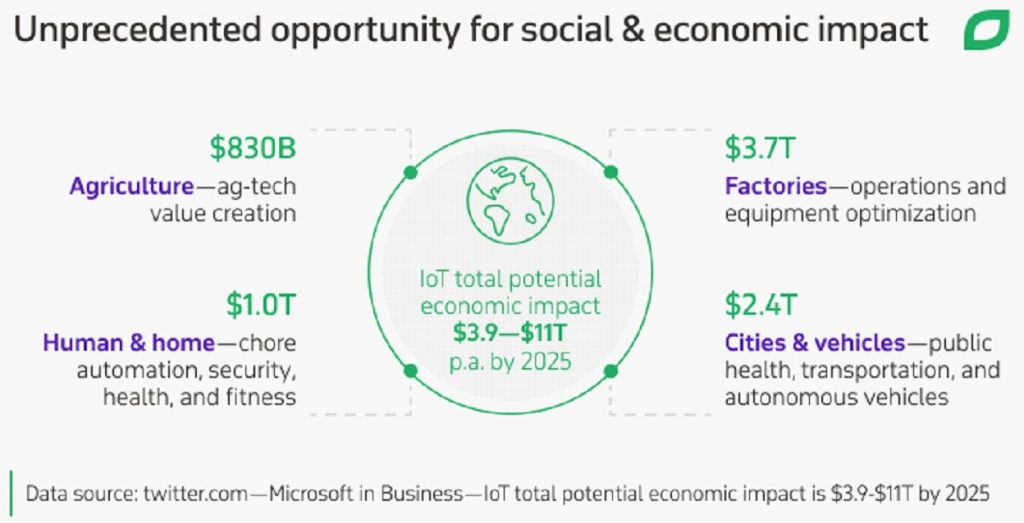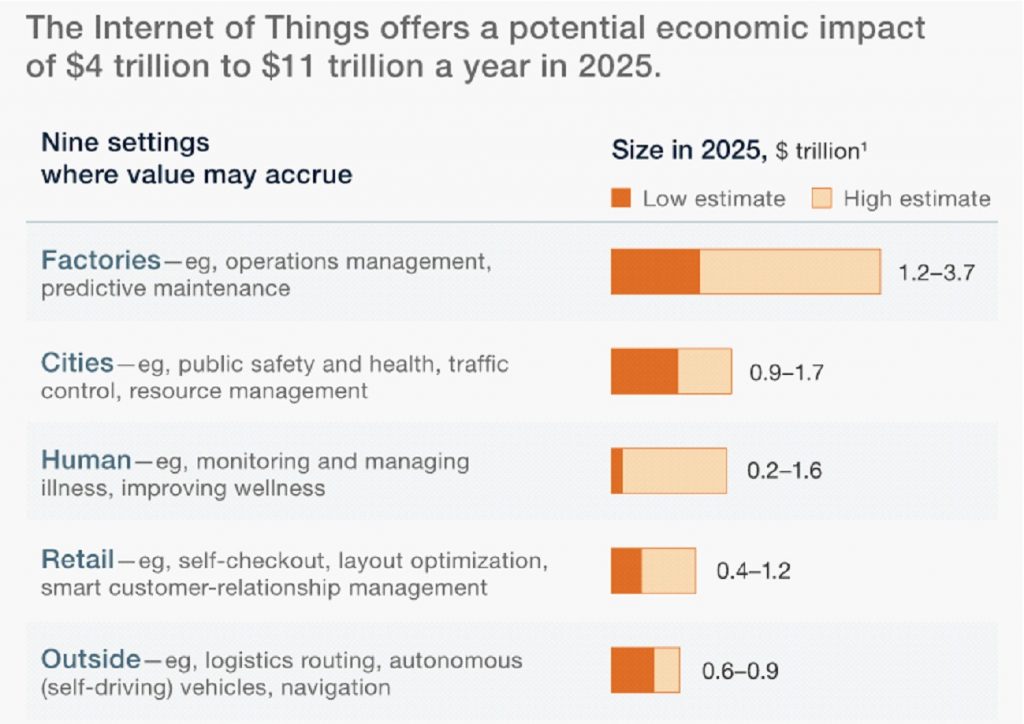
A century ago, the world discovered a new resource, which spawned a lucrative and fast-growing industry. This new resource was oil. In today’s digital era, however, a new resource has been discovered and the scenes from a century ago are being repeated. And the resource in question is data.
Whatever industry you are working in, odds are that you have come across stories about how big data is transforming the face of our world. It’s being used in studies to develop new cures in the medical world, it’s being used to create targeted ads in marketing, and it’s being used to make faster and informed decisions in governments.
To take advantage of this influx of data and the widespread IoT adoption, private and public institutions are looking to hire dedicated software engineers to help develop software solutions that enable them to effectively use the data in their possession.
In this article, we are going to look at what the Internet of Things (IoT) is, the connection between IoT and data analytics, and merging the two can help positively impact your business.
So, what is the relationship between IoT and Big Data?
Basically, IoT and data are like Siamese twins that are intrinsically linked together. When organizations get hold of valuable data for analysis purposes, they use the data generated by IoT devices. And that’s where data analytics comes into the picture.
It helps businesses examine large volumes of data with varying data properties in real-time to come up with meaningful conclusions in the form of statistics, trends, and patterns. With these actionable insights, organizations are able to proactively engage with the data to make effective and informed decisions.
The growing number of smart objects and devices have seen IoT and big data combo become some of the most sought after technologies around the world. In fact, a recent report published by Statista estimates that the current number of IoT devices is 30.73 billion. And if this sounds hard to comprehend, the future growth of different IoT verticals is estimated to generate an estimated $135 billion in revenues by the year 2027.
By 2025, the average annual potential economic impact of IoT is estimated to be between $4- 11$T, according to a 2019 report by Mckinsey.
Benefits of Merging Data Analytics and IoT for Businesses
As the demand for IoT data analytics continues to grow, more and more widely known companies like Microsoft, Amazon, SAP, GE, and Salesforce have also started to adopt the technology into their day-to-day processes.
Here are 6 ways your business can positively benefit from IoT data analytics;
Improves Productivity
One of the areas that IoT data analytics can help your business is by improving productivity. By installing smart sensors and devices throughout your facilities, you are able to collect employee engagement data, performance ratings, and many other work-related parameters. Using this data, you can help streamline the day-to-day business operations of your organization as well as utilize employee energy and time more efficiently.
Predict Future Trends
Another area you can use IoT analytics is in the identification of future trends. In particular, you can use it to track energy usage for purposes of creating reliable estimates for future demand. IoT analytics has also emerged as a major player in predictive maintenance.
By attaching IoT sensors to different machine components, you are able to track their performance using a variety of stats like temperature or speed. As a result, identifying the parts that are most likely to need replacement becomes easier and you are able to notify the maintenance team in advance.
This is particularly important for manufacturing businesses with 24 hours of operations and doesn’t have the margins for sudden machine failure.
Facilitates Customer Understanding and Engagement
If you are in the retail business, using smart devices can help you gather intel on how customers are navigating through your store using push notification on their smartphones. And you don’t have to worry about data privacy concerns as such as a system doesn’t collect any personal information.
Once you have gathered this data, you can use IoT analytics to identify patterns and trends that occur. For instance, you may hire software engineers to help you develop a system that helps you discover the isolated areas in your store that customers aren’t visiting and make the necessary display improvements. Similarly, you can track the number of customers walking past your display window and look for ways to stop them.
Another area that IoT data analytics can help is in transcending the limitations of traditional marketing. By analyzing data on where your customers reside, it becomes possible to provide customized services within their location. Additionally, you are also able to create targeted advertisements for customers within walking distance of your retail shop.
Improved Safety and Security
Integrating IoT services with sensors and video cameras can help you monitor the workplace environment, ensure the safety of the workers, and protect against any physical threats. Better yet, if you are working with an IoT engineer under a remote working arrangement, you can easily coordinate your project in real-time, thanks to the connectivity of IoT.
Product Improvement and Innovation
As an entrepreneur, using IoT analytics metrics can help spawn the next generation of products. By incorporating smart devices into your products, you are able to understand its usage patterns and identify errors in the current design, allowing you to make changes accordingly.
Disaster Planning and Recovery
Another area that IoT data analytics can become a game-changer in disaster management. By integrating IoT sensors into warning systems, businesses are able to get huge volumes of data in real-time data, making it easy to monitor situations and make critical decisions before disaster strikes. For instance, IoT sensors can help monitor the levels of harmful gases in different manufacturing units in a company and automatically raise alarm or shut down the system.
Final Thoughts
We are living in a world where almost everything generates huge volumes of data. By combining this data with IoT systems, businesses are able to gain deep insights, unlocking previously untapped revenue streams, and gain new competitive advantages. Even though IoT still has some significant challenges to overcome, any data analytics engineer out there will tell you that their community is continuously working to make the technology more inclusive.


